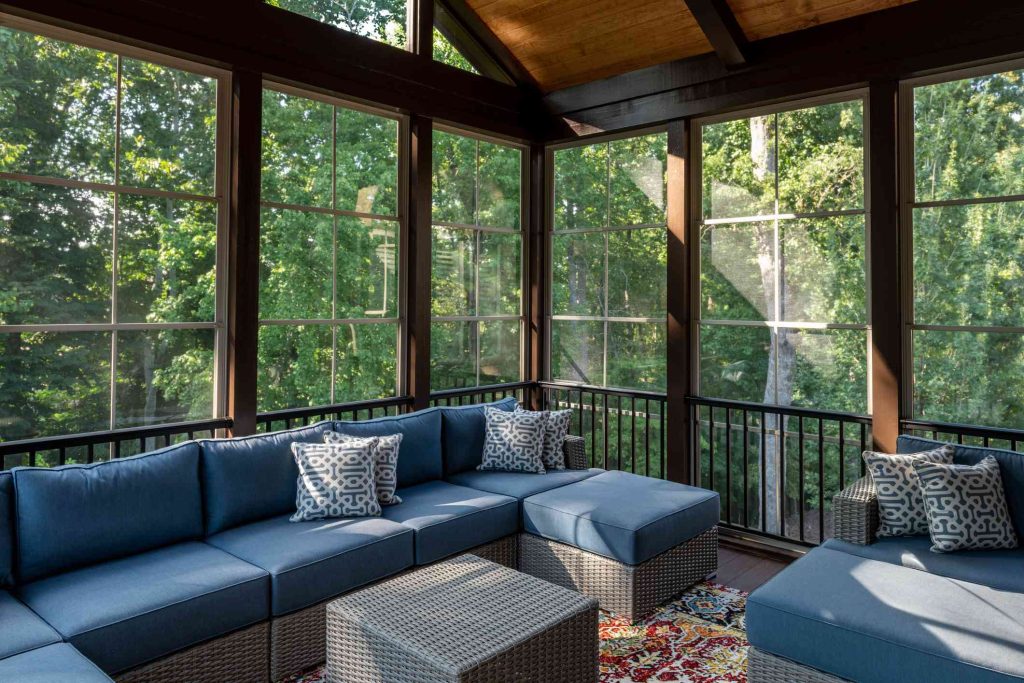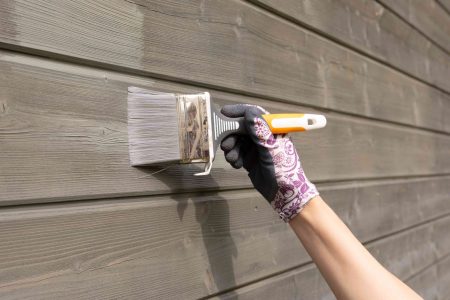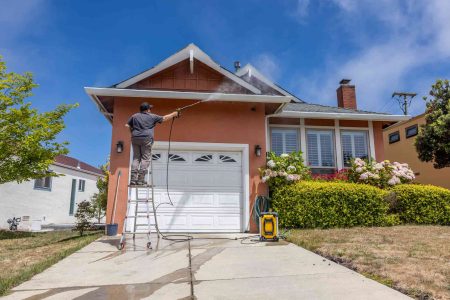A screened-in porch is a great addition to any home. It provides the residents and guests with a place outdoors, where they can enjoy the fresh air and cool breezes, without dealing with irritating insects. These structures also have a roof overhead to protect against the sun, rain, sleet, and snow.
Screening-in an existing porch costs about $2,000 to $2,800, or an average of $2,400 depending on the size, materials, and permit costs. However, building a new screened-in porch will cost significantly more, with an average price ranging from $4,600 to $22,000. Keep reading to learn more about the various factors that can affect screened-in porch cost estimates.
Screened-In Porch Cost Factors
Porch Size
One of the more important cost factors is the size of the porch. On average, you can expect to pay about $3 to $5 per square foot for screening, $2 per square foot for labor, and the additional costs for lumber and other materials. If you are building a new screened-in porch structure, then the cost will typically range from about $25 to $120 per square feet.
| Size (Sq. Ft.) | Average Cost for Existing Porch | Average Cost for New Porch |
| 60 | $1,000 to $1,450 | $1,500 to $7,200 |
| 80 | $1,300 to $1,900 | $2,000 to $9,600 |
| 144 | $1,450 to $2,050 | $3,600 to $17,300 |
| 200 | $2,000 to $2,800 | $5,000 to $24,000 |
| 224 | $2,250 to $3,150 | $5,600 to $26,900 |
| 256 | $2,600 to $3,600 | $6,400 to $30,750 |
| 300 | $3,000 to $4,200 | $7,500 to $36,000 |
Type of Screen
The type and material of the screen for the screened-in porch construction will also influence the cost of the project. The most common options for a screened-in porch include aluminum, fiberglass, solar screens, and motorized retractable screens.
- Aluminum screens are a common choice because they hold up well in rain, sleet, snow, and direct sunlight. You can expect to pay about $5 to $7 per square foot for aluminum screen installation.
- Fiberglass screen installation is the most affordable option with an average range from $4.50 to $5.50 per square foot. This material may not be as durable as aluminum, but it is highly resistant to rusting and corrosion.
- Solar screens are essentially dark panels that fit into the openings of the porch. They are used in place of traditional screens to deflect sunlight and reduce glare. Typically, solar screens cost about $5.50 to $7 per square foot.
- Motorized retractable screens are the most expensive option, but these automated screens are not usually sold by the square foot. Instead, they are sold by the unit with an average cost of $2,000 to $4,000 per unit.
Flooring Options
If you are building a new screened-in porch instead of retrofitting an existing porch or deck, then you will also need to consider the cost of the flooring materials. Typical choices for a screened-in porch include concrete pavers, stenciling, floating wood, tile, and radiant heated flooring.
| Material | Average Cost (Per Square Foot) |
| Concrete Pavers | $2 to $7 |
| Stenciling | $2 to $7 |
| Floating Wood | $5 |
| Tile | $5 |
| Radiant Heated Flooring | $10 to $20 |
Screen Door Installation
In order to access the screened-in porch from the yard, you will need to have a screen door installed, which are available in a range of different materials, styles, and types.
The average screen door installation ranges in cost from about $300 to $2,000. A simple $300 door may be enough for a relatively quiet household, but if you have kids or pets, then you may want to invest in a more durable screen door that will be able to withstand scratching, yanking, and slamming.
Roof Material
Whether you are retrofitting a deck with a screened-in porch or building a new screened-in porch, you will need to consider the roofing material when coming up with a budget for the project. Many homeowners choose to go with a roofing material that matches the roof of the home, so that the new screened-in porch blends well with the rest of the house.
However, there are other roofing material options to consider, including aluminum roofing, wood roofing, or even glass roofing, which has the added benefit of allowing more sunlight to enter the screened-in porch.
| Material | Average Cost (Per Square Foot) |
| Shingles | $3.50 to $5.50 |
| Wood | $4.50 to $13.50 |
| Aluminum | $4 to $15 |
| Glass | $22 to $75 |
Frames or Posts
Similar to the other construction materials used for this project, the frames or posts that you choose can affect the total cost. Frames and posts vary in price depending on the material. Common options for a screened-in porch installation include fiberglass, pressure-treated wood, hardwood, stone, vinyl, aluminum, and wrought iron.
| Material | Average Cost (Per Post) |
| Fiberglass | $60 |
| Pressure-Treated Wood | $40 |
| Hardwood | $50 |
| Stone | $200 |
| Vinyl | $100 |
| Aluminum | $100 |
| Wrought Iron | $50 |
Railings
Similar to the frames or posts, the railings for this construction project can be found in a variety of different materials. The cost of the project can vary depending on the material you choose for the installation. Typically, wood, vinyl, aluminum, and wrought iron are the go-to materials for railing construction.
- Wood is an inexpensive choice that’s easy to work with. If you go with wood railings, expect to pay abut $6 to $30 per linear foot.
- Vinyl offers a high level of resistance against rain, sleet, ice, and snow, though it does cost a little more than wood with an average price of about $15 to $50 per linear foot.
- Aluminum is tough, durable, and lightweight. It’s an effective option that can provide support while resisting rust and corrosion. If aluminum is the right material for your project, plan to spend about $30 to $120 per linear foot for railing materials.
- Wrought iron has the highest starting cost of these four materials with a price ranging from $40 to $60 per linear foot, but aluminum can cost more. This railing option has high strength and durability, though it is susceptible to rusting.
Steps
Installing porch steps on a screened-in porch will generally cost about $300 to $1,900. A basic set of concrete stairs for a screened-in porch typically costs about $300, though the more complex the design or the higher the porch, the more it will cost. When you are planning this part of the project, consider the size of the stairs, height of the stairs, porch layout, and stair materials to decide on the right design for your screened-in porch.
Permits
Depending on the local guidelines and regulations, you may require a permit for the construction of the screened-in porch. Typically, a building permit for a screened-in porch will cost about . Check with the contractor you have hired to complete this work for more information. Some contractors may even take care of the permit application and acquisition process for you, though it’s important to find out this information before work begins. If you aren’t sure whether a permit is required or not, head to the local permit office to find out.
DIY vs. Professional Installation
You can cut down the costs of the installation by completing the job as a DIY project. Given that the cost of labor is about $2 per square foot, you may be able to save about $400. The drawback is that you likely won’t be able to complete the job with the same skill, speed, and precision as a professional contractor. Additionally, contractors have the knowledge and experience to quickly assess the project, come up with a plan, source materials, and ensure that the construction is up to code. Weigh the pros and cons to decide whether a DIY or professional installation is best.
Benefits of a Screened-in Porch
There are a variety of benefits that come having a screened-in porch. The most obvious benefit is the pest protection the screen provides. You and your guests can sit outside, relaxing in the fresh air and cool breeze, while mosquitos, flies, and other insects are trapped outside.
A screened-in porch can also protect against the sun, rain, sleet, ice, and snow, so you can enjoy the outdoors in any weather. Adding a screened-in porch to the home is a good way of extending the living space. There are a range of custom features you can select to make the screened-in porch more comfortable and appealing, such as ceiling fans, outdoor kitchens, speaker systems, or even an outdoor fireplace.
Depending on the location and the current local housing market, a screened-in porch may also increase the value of the home, with many homeowners receiving up to 84 percent return on the cost of the installation. With this wide variety of benefits, it’s easy to see why installing a screened-in porch is a good idea if you have the time and the budget.
-
Can you build a screened-in porch on an existing deck?
A screened-in porch can be built on an existing deck, and it can also save you money on the cost of the project because you don’t need to worry about constructing a base, stairs, or railings.
-
How can I save money on a screened-in porch installation?
There are a few ways you can save on the cost of a screened-in porch upgrade, including reducing the size of the planned porch, screening-in an existing porch, using inexpensive materials for the project, and completing this installation as a DIY project.
Read the full article here














